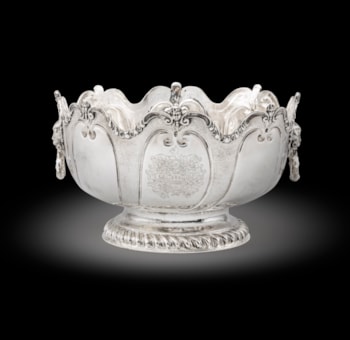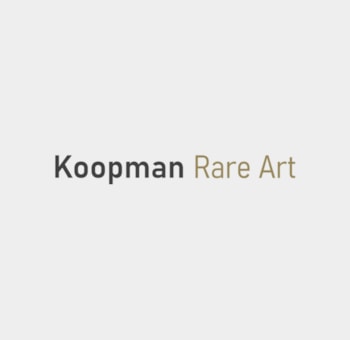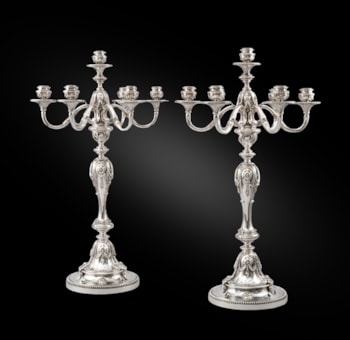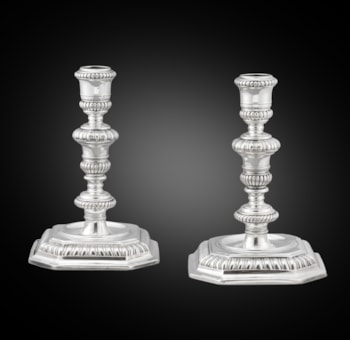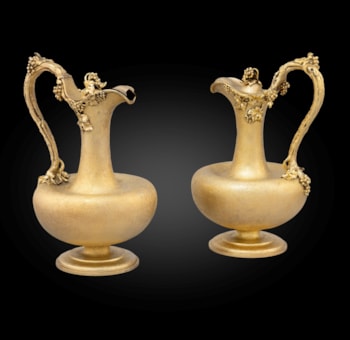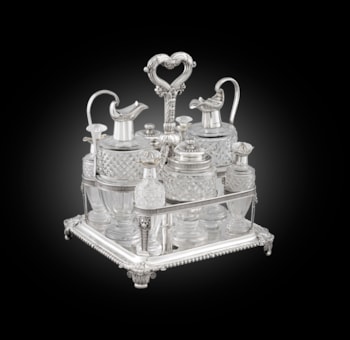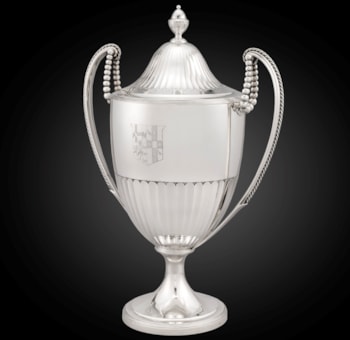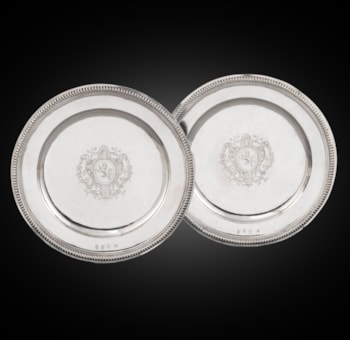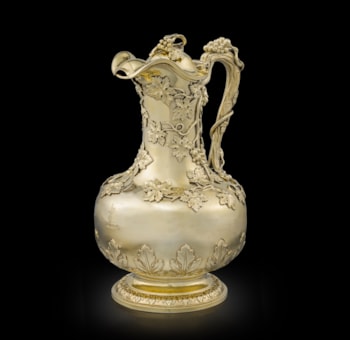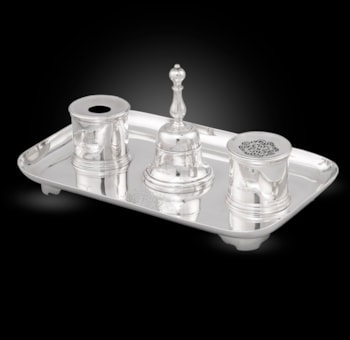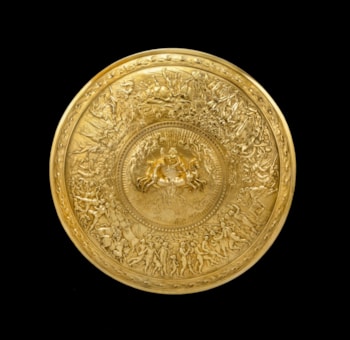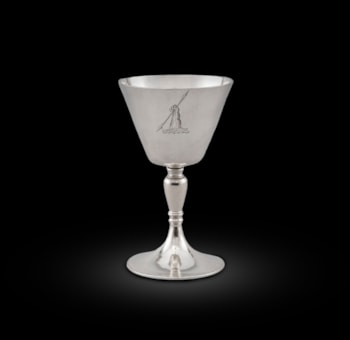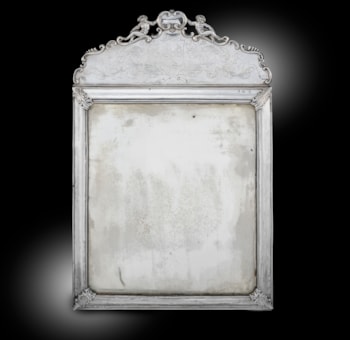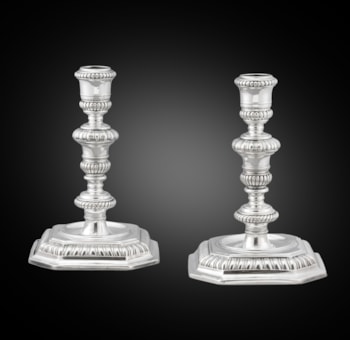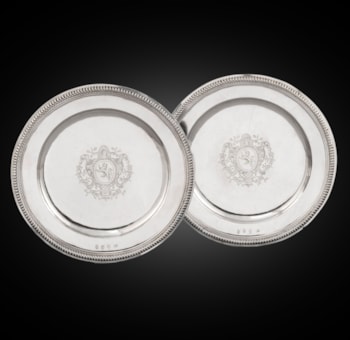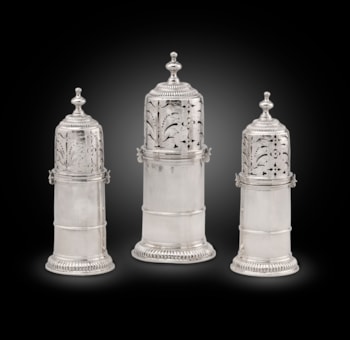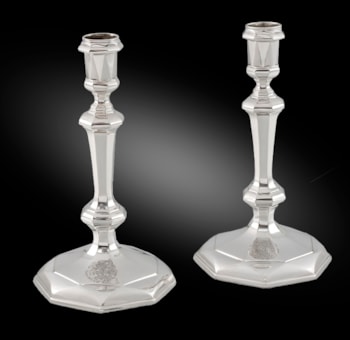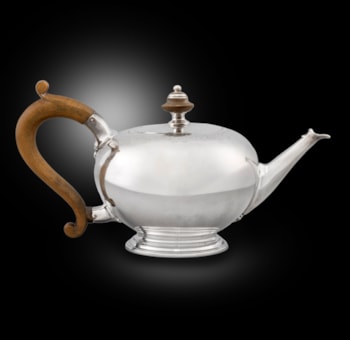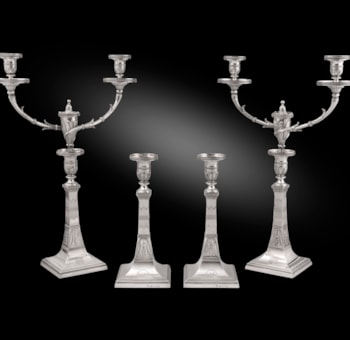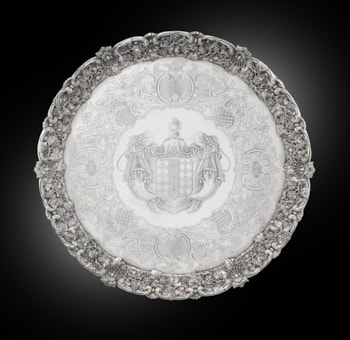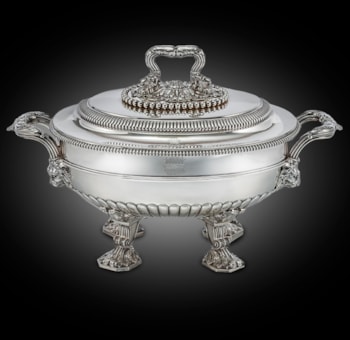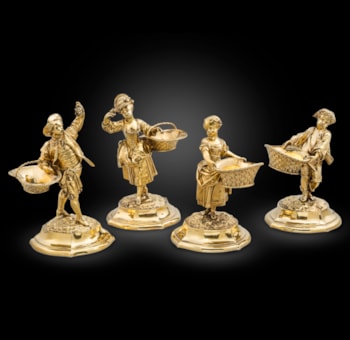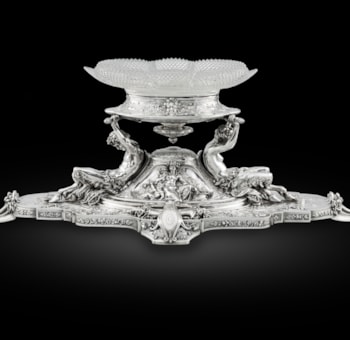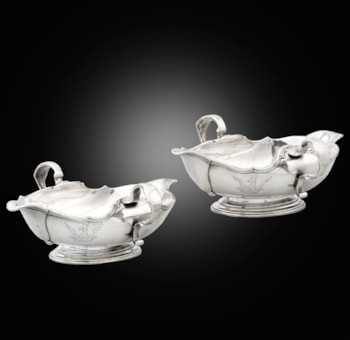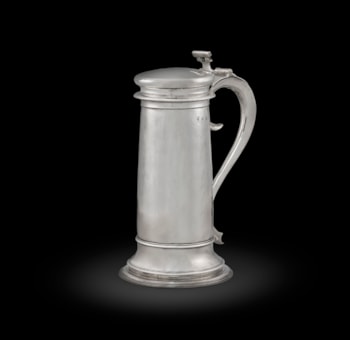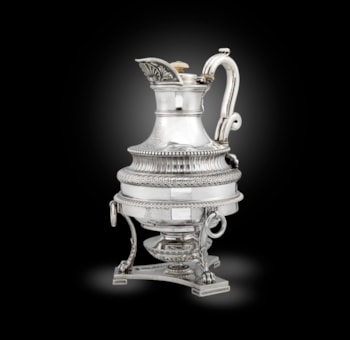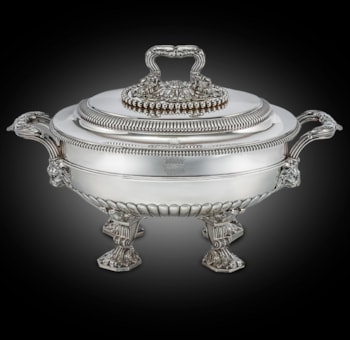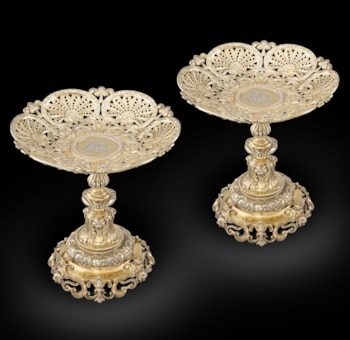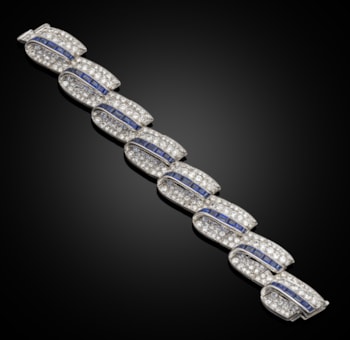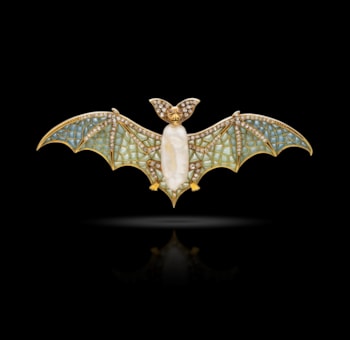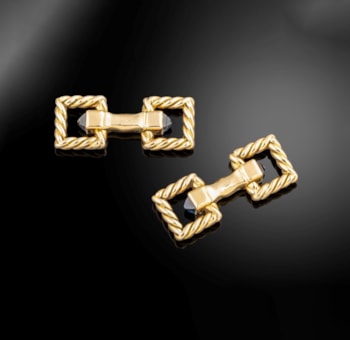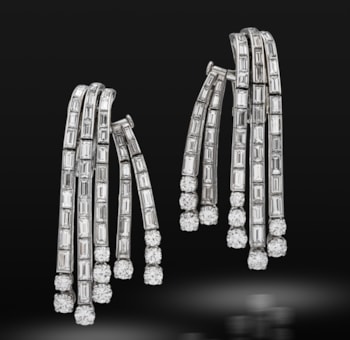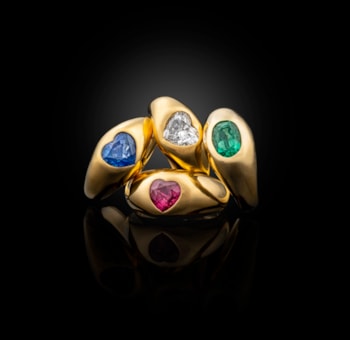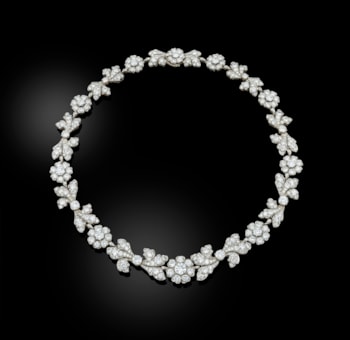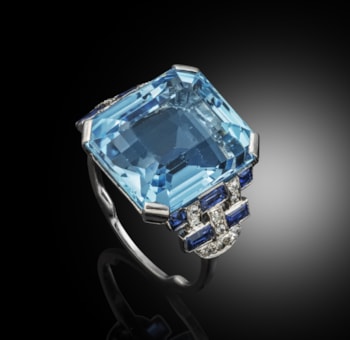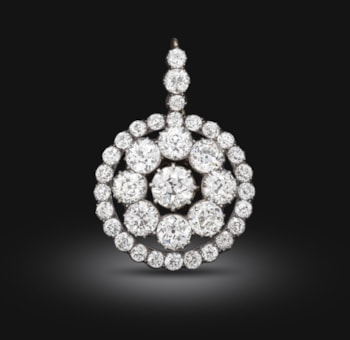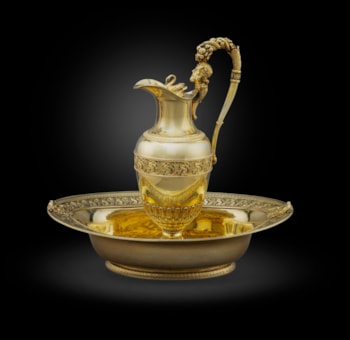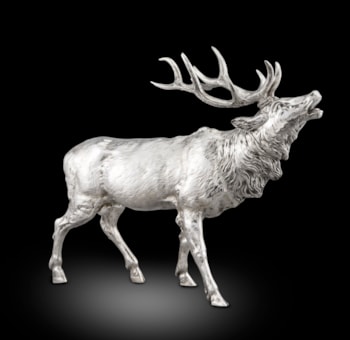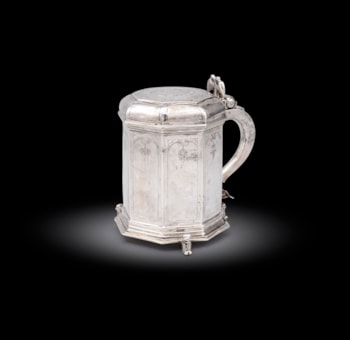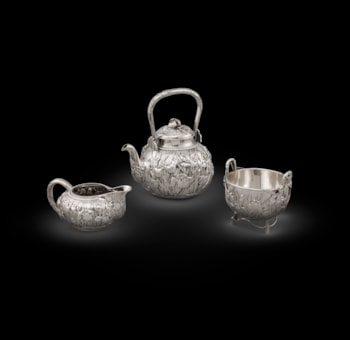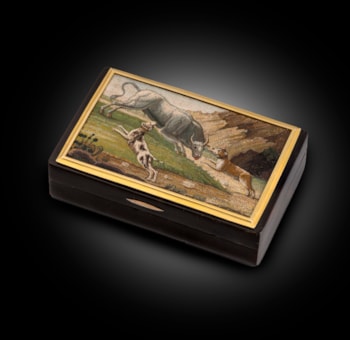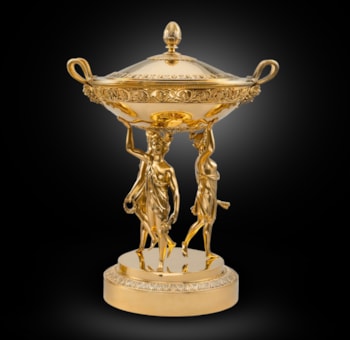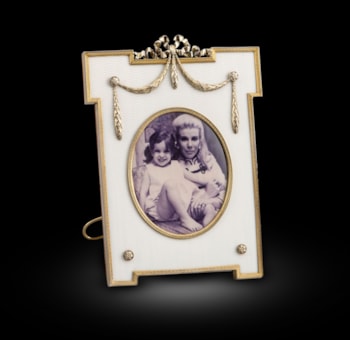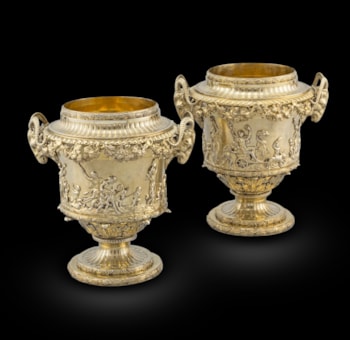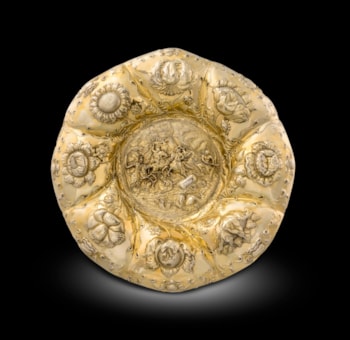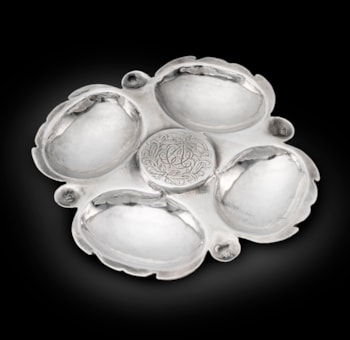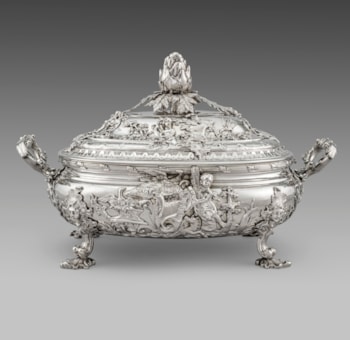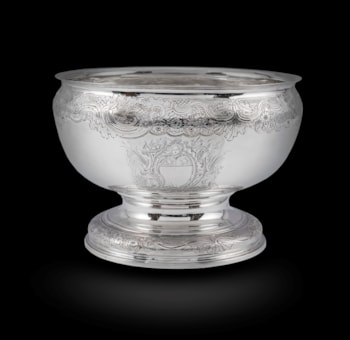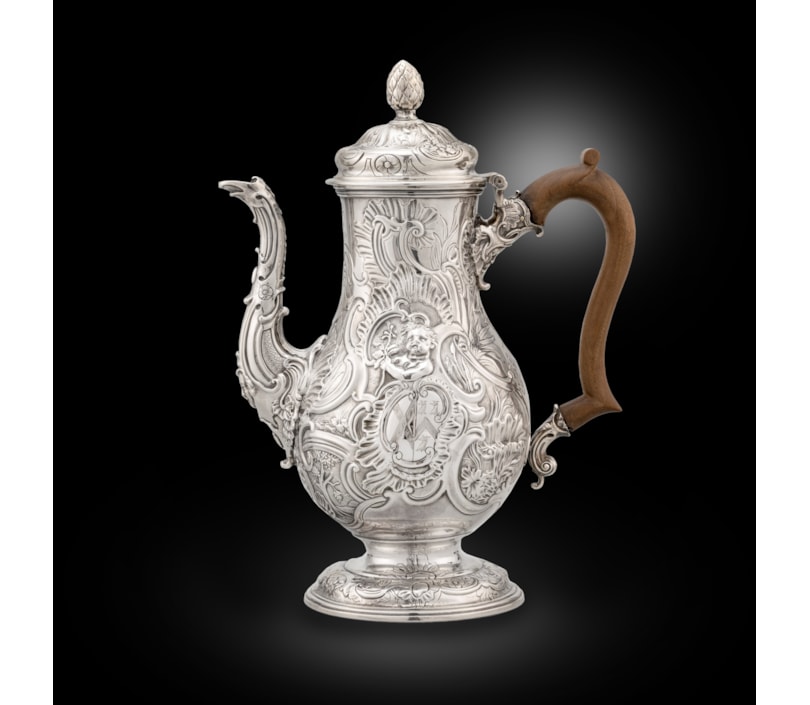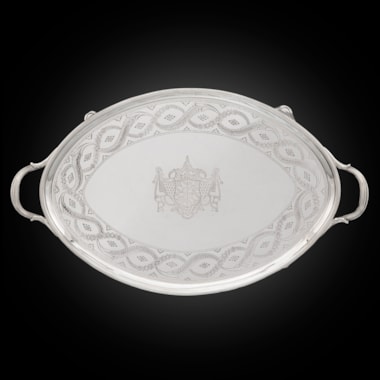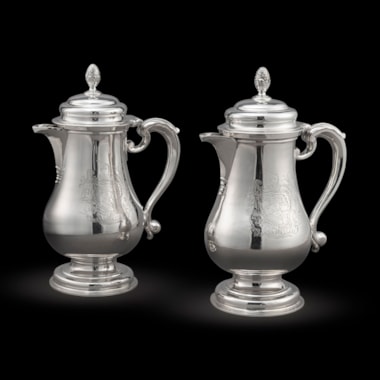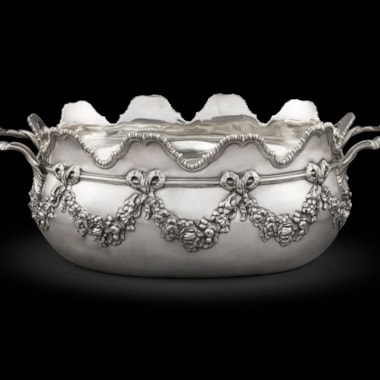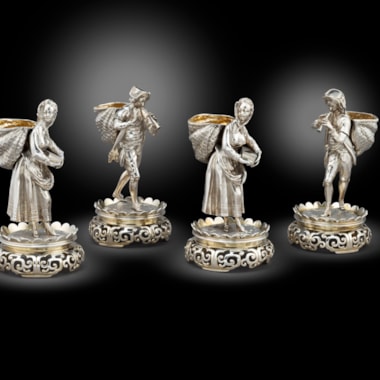The coffee pot on pedestal foot chased with asymmetrical scrolls and flowers. The pear-shaped main body waterfalls, gardens, shells, natural fauna, and putti grasping the coffee flower above a cartouche on each side of the pot. One cartouche with the family coat-of-arms. The handle terminating with a wonderful grotesque mask. The spout with a similar mask, together with scale-work and asymmetrical scrolls.
No record of apprenticeship or freedom. The identity of this highly important maker remains a baffling mystery. His name is obviously German, and it would seem reasonable to think, from his ability to create such different flamboyant quality shapes in so much of his work, that there is a connection with the Meissen porcelain modeller with the same name. The late Norman Penzer, when working on the subject of the great wine cooler in the Hermitage, made considerable effort to uncover any clue to his origin without success. His first dated marks, (sterling and new standard), are entered as a large worker in partnership with James Murray, 29th August 1727. Address: ‘in Sant Martens Lein’, which appears to be in Murray’s hand after his signature rather than in Kandler’s. There is a third, new standard, apparently entered at some time, undated, for Kandler alone without address. In this the mitre above the initials appears, which is not in the Kandler/Murray marks, and a similar unregistered sterling mark CK with mitre above is found on the remarkable undated kettle in the Victoria & Albert Museum. The third mark provides an important link by being re-struck in the same entry as the fourth and fifth marks, 10th September 1735. These have been considered by Penzer and others to be that of a separate individual as the name is entered in Benjamin Pyne’s hand, (The touch Warden of the day), as ‘Charles Frederick Kandler in German Street near St James Church’, and he so signs in full, the first and last names being clearly in the same hand as those of the first two entries. This entry may have been made on Kandler’s move to Jermyn Street, since it not only has the new standard mark KA, but also the fifth mark using the initials FK for the first time. This is followed by a sixth entry, 25th June 1739, in which the signature, allowing for age and the dropping of Charles, is clearly the same hand again. The last and seventh mark is a variant of the sixth entered below the 1739 mark and only countersigned by the Warden Joseph Howard, as usual. The discovery of a further new standard mark in 1964 on a magnificent inkstand of 1751, in company with much other family plate bearing the earlier established marks, was an interesting addition to documented marks. The distinction of the varying Christian names is repeated in the entries of various apprentices to Kandler in the indexes to the apprentices of Great Britain extracted from the Inland Revenue books at the Public Records Office. Charles Kandler, goldsmith of St James’s, Westminster, is listed as master in 1735 of Ralph Wilberforce and James Rigby. In 1743 Charles Frederick Kandler, also goldsmith, St James’s, Westminster is listed as master of William Moody. Again, Frederick Kandler of St James’s, Westminster, silversmith, appears as master of William Reynolds in 1748 and Peter Rooney in 1760. Frederick Kandler plate worker, Jermyn Street appears in the Parliament Report list in 1773.
You May Also Like




